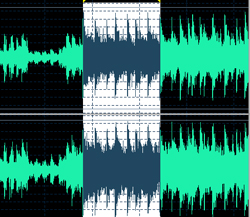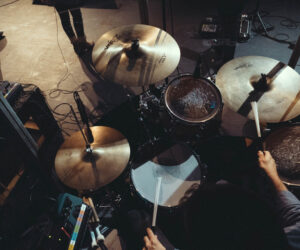My primary gig is mixing – so I’m down stream of most of the production and pre-production. I spent a long time facing issues that I just couldn’t seem to solve: It doesn’t feel right, my mid-range is weak, I can’t get a sense of dimension, the kick and bass are clashing. No matter how much I EQ’d, compressed, worked out the reverb, it just wouldn’t quite seem to gel.
Eventually I came to realize that the issues I faced had very little to do with mixing, and actually resided in the arrangement or editing. These are two subjects that are often ignored, but have a huge influence on the song and the mix.
This article will provide a little insight into the importance of editing, and some basic ideas about editing you can use.
Editing is really not so different from mixing. It’s the manipulation of the recorded sound to create a desired outcome. Except the processes are different.
Some basic editing processes are: Pitch Correction, Time Alignment, Clean Up and Compositing.
Pitch Correction
No matter how much EQ, compression, flanging, whatever, you use – if something is out of tune with something else they will forever interfere with each other. Sometimes reverb or slap delay can hide some pitchy sounds, but now a days we have pitch correctors. Unless working on a project that specifically demands an organic feel or off pitch sound is a cultural aesthetic – pitch correction is going to immediately gel your sounds together. This includes the whole range of instruments.
Sometimes you’ll get something like an 808 kick drum that just doesn’t seem to sit well with the bass – it’s either blurry and lacking impact, or you have to turn it up to the point where it masks the rest of the track. The 808 might be out of tune. Pitch Shifting would be your solution here – while most people would reach for an EQ.
Potential Pitfall – Pitch Correction can be like a drug. You use it and all of the sudden everything just fits magically. This leads to the temptation of overusing it. Pitch Correction is great for smoothing out a couple of bad notes, or tightening up a wide vibrato, but too much can easily stagnate a natural performance, and can also degrade the tone.
Time Alignment (to Grid or not to Grid?)
Getting things to feel good has a lot to do with timing. Understanding groove and timing is really what separates a serious editor from a cut and paste artist.
Time is very subjective (ask a drummer) – and how the sense of timing is manipulated is difference between a rhythm and a groove. On top of that, there’s the decision as to how tightly things should lock together. One might assume you want your drums hitting evenly on the quarter notes, and your bass perfectly in sync with the drums – but this is not necessarily true. Sometimes you want the bass coming in a little earlier or a little later than the drums. This is called “pocket” and creates a different feel depending on how it’s played.
The Tight Pocket: Maximum punch and rhythmic articulation. Here, the playing clearly outlines the groove, and the sound hits. The players are literally playing right on top of each other. If this is the intent, align notes that fall too far from the accent points – visual aid can be helpful in this process (zoom in on the waveforms).
The Medium Pocket: Phatness. Often times (in funk music in particular) the bass will play a little a head of the drummer. This creates an excited feel, and makes the sound “fatter”, and allows for a little bit of wiggle room for the voiced lines (keys, vocals, solo violin, etc) to play with their own sense of groove. A very common P-Funk move is to have the bass anticipating the beat a hair, while the vocalist is singing behind the beat. Here, you have to be careful as to how you edit, but if something that normally hangs back is suddenly forward, or vice versa, you may want to do a little cut and nudge.



















